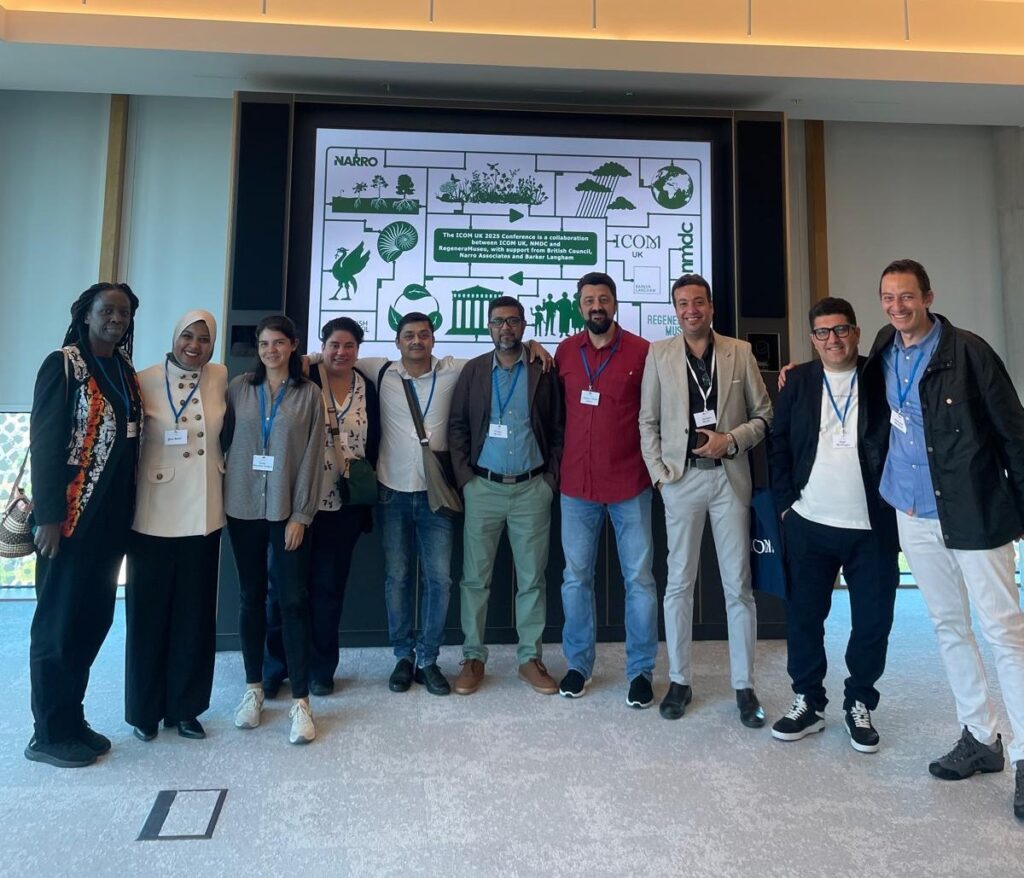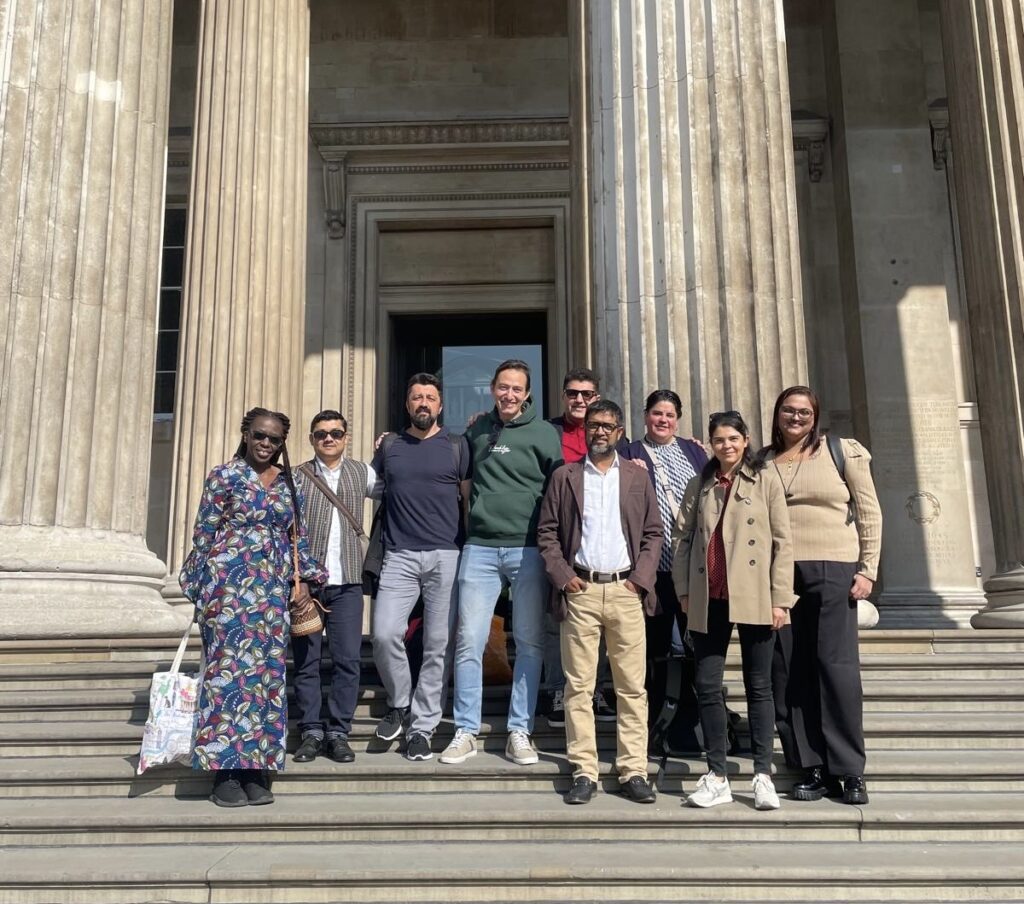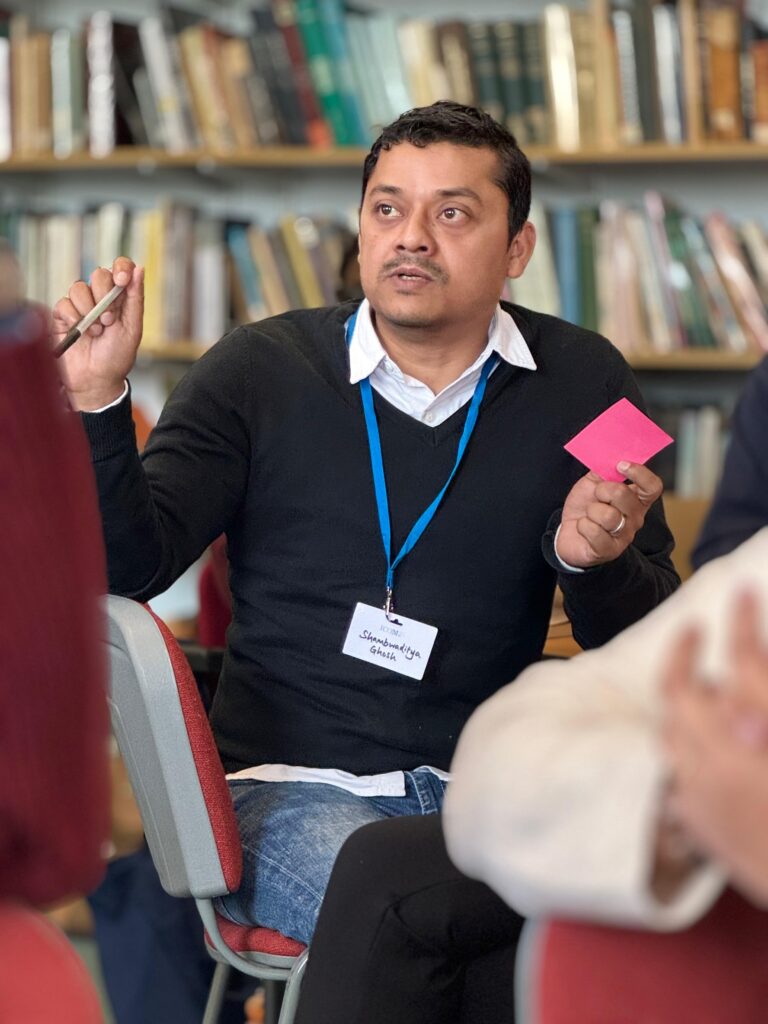Museum as a Regenerative Space: reflections from the ICOM UK Conference 2025
Written by Shambwaditya Ghosh, Senior Fellow, 2015 and a member of the ITP Advisory Board.
A museum is a space that embodies various paradoxical understandings of human civilization. On one side, it connects the dynamism of human expressions through objects, time, and space, thereby linking people and culture. On the other hand, museums develop their institutional framework, relating themselves to the challenges faced by society. They are institutions which collect and preserve human knowledge for future society. The critical examination of this relationship between museums and society focuses on how to create a sustainable model for a better future.
When we recognize that our disconnected existence has resulted from urbanisation, polarisation, and fragmented living, we see how we distance ourselves from our pasts. Museums bridge this gap by displaying objects made by our ancestors, which draw inspiration from nature. These objects symbolize an essential understanding of technology, art, and culture. Today, museums stand at a juncture, evolving from mere repositories into experimental and inspirational spaces that regenerate concepts of culture, environment, and politics.
Recently, I had the opportunity to attend the ICOM (UK) conference on May 1 and 2, hosted in the city of Liverpool. The theme of the conference was Regenerative Museums for a Developing Sustainable Future, addressing the key issues of museum’s roles as dynamic players and negotiators, responsible for regenerating their roles and resources for sustainable development.

The first day of the conference consisted of various presentations of case studies from across the globe, discussing how museums can leverage their resources and positions to transform from repositories of art into people-oriented spaces that bridge the relationship between humans and nature. The second day featured thought-provoking workshops designed in a participatory and collaborative format, allowing everyone to share their thoughts and develop a comprehensive understanding of the issues at hand. For more details about the workshops, please visit the ICOM (UK) website, which includes information about the keynote speakers who delivered insightful talks on how museums can reimagine their identities for climate action.
Along with the ITP core team—Claire, George, and Amelia—nine senior fellows from Kenya, Egypt, Armenia, Romania, Guatemala, Peru, Nepal, and India attended the conference. The workshops were facilitated by both young and senior members of ICOM UK. The sessions I participated in, along with other members of ITP, included Action Plan for Sustainability – ICOM SUSTAIN, Looking Inward: How to Talk about Activism, and Sustainable Future and Design Thinking. These workshops emphasized how to regenerate museum spaces for a sustainable future.

We discussed regional, national, and international policies for the preservation of antiquities, how museums can collaborate to return antiquities for peacebuilding and community engagement, and how to envision museums as spaces for activism and inclusive politics. We explored ideas on how museums can be reimagined as organic, immersive, and inter-woven spaces to initiate dialogue around climate action and peacebuilding.
The conference aimed to address the capacity in which museums today operate as agents capable of transforming their physical and intellectual resources, creating free spaces, and acting as authorities in tackling the challenges of climate change.
As repositories of objects, museums tell stories about who we are and our relationship with Mother Nature. The presentations and workshops focused on how we perceive the world and what we can do to bring nature, culture, and community together.
It is noted that many museums are highly centralised institutions, resulting in low adaptability and responsiveness to contemporary issues. Consequently, many fail to effectively communicate with their primary stakeholders—the community—thereby neglecting to represent and interpret their aspirations, in other way their relationships with the nature.


The concept of regenerating museum spaces creates opportunities for museums to play a vital role in the social and cultural fabric, particularly in developing policies for sustainability that combine nature, culture, and community. While museums are structured to tell stories, many remain unaware of their ecological context. This conference highlighted unexplored avenues for museums to create a voice that addresses issues on a local level. Climate change is a universal challenge, understood diversely across different cultural practices, and responsibility for it is shared by all.
What can museums do about this? As repositories of diverse cultures, museums should tell the stories of the relationships between humans and nature. Built on cultural resources, museums serve as tangible examples of this relationship. We need to think about how our museum spaces can be reimagined and re-presented, where narratives extend beyond comparing time and space, to include reflections on the environment that influences the creation of objects.
